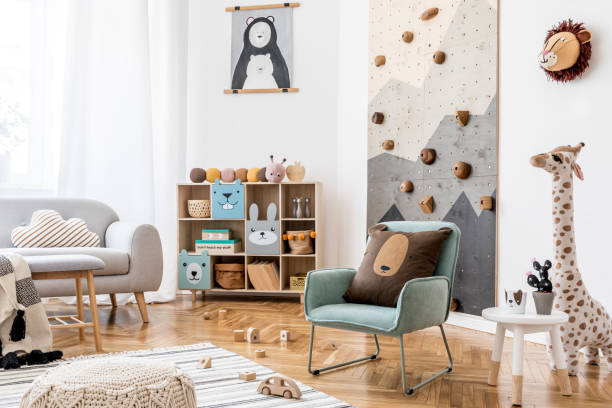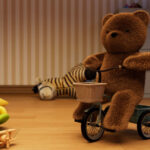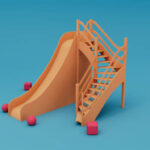Inspiring Bravery in Children – The Power of Indoor Climbing
Children are naturally exploratory and often scale furniture or stairs in search of adventure. Indoor climbing toys, also known as indoor climbing structures for kids, provide a safe and engaging outlet for this instinct. Indoor climbing toys are quietly reinventing the way children grow, play, and engage in the safety and comfort of their own homes. More than just mini jungle gyms, these play structures, from soft foam climbing frames for infants to sturdy wooden Pickler tripods for toddlers, are designed to promote physical activity, cognitive development, and emotional growth.
With the average child between the ages of 8 and 18 spending 6 to 9 hours a day in front of a screen, according to the Centers for Disease Control and Prevention, indoor climbing toys offer an important alternative to sedentary habits, encouraging active play even when outdoor options are limited. We’ll look beyond the common “best picks” and dive into what really matters: the why, how, and what to do next – along with the best recommendations for each need. From soft climbing toys for toddlers to complex indoor climbing toys for older kids, we’ve got it all. Let’s climb!
Understanding the Value of Indoor Climbing Toys: Is it Worth Buying?
Before investing in any climbing equipment, many parents ask themselves a question: Are indoor climbing toys the right choice for their children to play with? The answer lies in observing the innate behaviors of children. Indoor climbing toys are more than just fun, they are powerful tools for promoting children’s development. Research and expert insights highlight their impact on physical, cognitive and emotional areas: From infancy, children naturally enjoy pulling, pushing, grasping and climbing. Pediatric occupational therapists believe that these activities activate core muscle groups and improve fine and gross motor skills. A study published in the Journal of Motor Behavior highlights that young children who frequently engage in climbing activities show faster motor coordination and stronger problem-solving skills.
Physical Development Through Climbing
Climbing exercises a child’s entire body and improves strength, coordination, and if combined with balance toys that can also catalyze balance ability. A study by PlayCore found that climbing in early childhood can enhance spatial and directional sense and promote the development of gross motor skills such as hand-eye-foot coordination. For example, walking in the Pickler Triangle requires children to exercise their arms, legs and core muscles, which is a low-impact full-body exercise. Physical therapist Dr. Giselle Tadros notes that climbing toys are “great for developing grip and core strength,” which are essential for overall physical health.
Cognitive Development and Problem Solving
Climbing also stimulates the mind. A 2015 study from the University of North Florida showed that just two hours of climbing can improve working memory by 50 percent, helping to improve information processing and behavioral skills. When children plan their movements on indoor climbing structures, they develop problem-solving skills and spatial awareness. Reaching the “top” fosters a sense of accomplishment and boosts confidence, while climbing helps with muscle development and coordination while improving motor skills. Children develop spatial reasoning skills by learning to judge heights, depths, and paths of movement.
Emotional and Social Benefits
Climbing fosters the confidence and independence to conquer new heights. A 2008 study from Naperville Central High School showed that incorporating climbing into physical education classes improved students’ mood, focus, and academic performance, suggesting that climbing can provide emotional benefits. Socially, using indoor climbing toys in a group setting can promote interaction and communication because children can share space or take turns playing.
Benefits for Children with Special Needs
Climbing toys can be especially beneficial for children with developmental disabilities. A 2017 study published in the journal BMC Neurology examined indoor climbing activities for children with cerebral palsy and found that such activities were feasible and helped improve motor skills and confidence. These toys provide a safe environment for children of all abilities to explore and grow.
Whether you live in a small apartment or a spacious home, there is an indoor climbing toy that can be a starting point for your confidence boost.
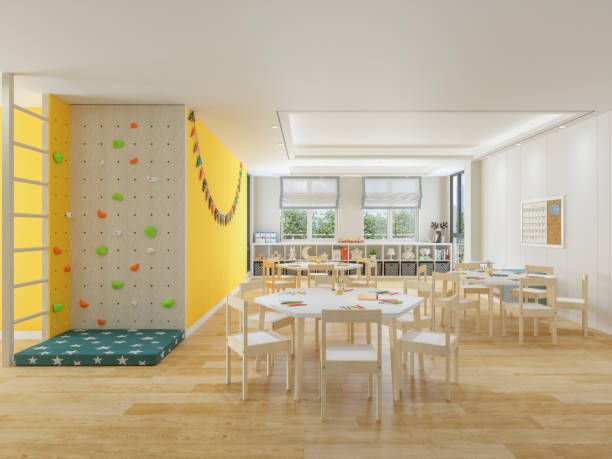
How to Choose the Perfect Indoor Climbing Frame for Your Child: Not All Are Created Equal
When first approaching this area, choosing the right indoor climbing frame requires balancing your child’s age, available space, physical strength, curiosity, and safety needs is crucial. Below are factors to consider and the types of toys available.
Key Factors In Choosing An Indoor Climbing Frame
Age-appropriate climbing frames: Infants (6 months to 1 year) need soft, low structures such as foam blocks; toddlers (1 to 3 years) can play with Pickler triangles or climbing arches. Older children (4+) may prefer more complex indoor climbing structures.
Space: Measure your available space. Collapsible climbing frames, such as the BlueWood Pickler Tripod Set, are great for smaller homes. Simple designs, such as arches, ramps and triangle climbers.
Safety: Choose a climbing frame that is made of non-toxic materials, has a stable design and has a weight limit. Make sure it meets safety standards such as CE or CPC certification. Low platforms reduce the risk of falls.
Materials: Wooden climbing frames are durable and environmentally friendly, while foam climbing frames are softer and easier to clean. Soft landing area, e.g. with cushioning or foam base.
A good strategy is to start with a combo set that includes a crawl tunnel and climbing slide. These toys both simulate exploration and provide a controlled climbing progression.
Tip: Avoid overstimulation – choose neutral colors and simple shapes that allow your child to focus on movement rather than distraction.
Types of Indoor Climbing Toys
| Type | Description | Age Range | Pros | Cons |
|---|---|---|---|---|
| Pikler Triangle | Wooden triangle with rungs for climbing, often adjustable | 6 months–7 years | Versatile, durable, grows with child | Higher cost, requires space |
| Climbing Arch | Curved structure for climbing or rocking | 6 months–5 years | Promotes balance, multi-use | May tip if not supervised |
| Foam Climbers | Soft, colorful blocks or shapes | 6 months–3 years | Safe for infants, easy to clean | Less durable, limited complexity |
| Modular Play Sets | Combination of slides, tunnels, and climbers | 1–5 years | Encourages varied play | Bulky, may require assembly |
Design a Climbing Playground: Indoor Climbing Spaces That Are Actually Enjoyable, Safe, and Fun
Creating an indoor climbing space in your home, an indoor climbing frame is more than just a piece of furniture; it is an environment that must be carefully designed. Make sure kids can play safely and stay focused. Children are more likely to be drawn to spaces that are both challenging and safe. Here are practical tips for creating an effective play area.
Safety First
Matting: Lay soft mats or foam tiles under climbing areas to cushion falls. The American Academy of Pediatrics recommends that parents supervise and place mats to prevent injuries.
Location: Choose a flat, open space that’s free of furniture or sharp objects. Avoid placing a climbing frame near a table or shelf. Designate a safe corner around the climbing frame and leave plenty of open space.
Stability: Make sure your indoor climbing frame is sturdy and durable. For example, a wooden climbing frame should be anchored or have a wide base to prevent tipping. Install anchorless wall climbing frames or free-standing ladders to match ceiling heights and room layouts.
Fun
Combine a climbing frame with other play structures, such as tunnels or balance beams, to create a mini obstacle course. Spark your child’s interest by decorating the climbing area with a color or theme they like. For example, a pirate-themed climbing area can spark a child’s imagination. Encourage occasional participation, or set small challenges, such as climbing a specific rung.
Add Variety: Consider using a net rope wall, climbing frames, and indoor climbing points.
Maintenance
Foam climbing frames can be wiped down with a damp cloth to keep them sanitary, while wooden structures may need occasional polishing to maintain their finish. Check for wear and tear regularly to ensure safety.
In addition to physical training, indoor climbing frames promote social interaction. When two or more children climb together, they take turns, verbally cooperate, and even resolve conflicts – all of which help with early socialization.
Pro Tip: Have your child decorate an area of the indoor climbing frame with stickers or a chalkboard – this will increase their sense of ownership and frequency of use.
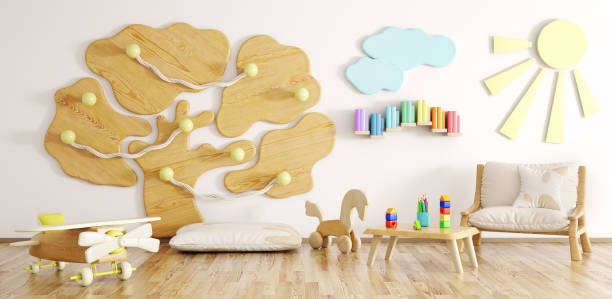
Are Infant Climbing Gyms Safe? Exploring the Infant Climbing Gym Landscape
Infant climbing frames, usually made of soft foam construction or low wooden frames, are designed for infants as young as 6 months old to help them practice crawling, getting up, and maintaining balance. It may sound surprising, but even 6-month-olds can safely use a designated infant climbing frame if it is carefully selected. These toys don’t “climb” in the traditional sense, but are soft platforms that encourage babies to lift their heads, roll and pull to stand. Of course, safety is of paramount importance.
Safety Considerations
Age-appropriate Design: Choose a soft, low climbing frame for babies to minimize the risk of falls. Rounded corners and plush materials can prevent injuries. For example, the Play22 soft climbing toy set is ideal because of its high-tolerance materials.
Supervision: Experts such as physical therapist Kimber Kurr emphasize that “playing with climbing toys should be supervised.” Never leave a baby unattended.
Boundaries: Set clear rules for climbing. Modular components that grow with your child.
Certifications: Make sure the toy meets safety standards, has a non-toxic, hypoallergenic surface, and is safe for your baby to explore.For example, safety standards from the U.S. Consumer Product Safety Commission (CPSC).
Benefits for Babies
Even at this age, climbing toys promote gross motor skills and independence. Montessori-inspired designs, like those from Goodevas, encourage deliberate movement, helping babies build confidence as they explore.
A 2021 study in the International Journal of Pediatrics found that infants exposed to sensory-motor play environments, including soft climbing frames, had improved crawling and seated balance at 9 months of age, compared to infants with limited motor opportunities.
What Are The Hot Indoor Climbing Toys? Don’t Just Look At The Brand
The best climbing toys are those that meet your child’s needs, not those that are popular. A carefully selected indoor climbing toy to meet different needs.
| Category | Product | Description | Price Range | Why It’s Great |
|---|---|---|---|---|
| Best for Toddlers | BlueWood Pikler Triangle Set | 7-in-1 foldable wooden set with arch, ramp, and ladder | $150–$200 | Versatile, grows with child, foldable for storage |
| Best for Small Spaces | Play22 Soft Climbing Toys | 5-piece foam block set, waterproof and easy to clean | $50–$80 | Compact, safe for infants, budget-friendly |
| Best for Multiple Kids | Step2 Game Time Sports Climber | Plastic climber with slide and activity center | $100–$150 | Durable, supports up to 60 lbs per child, encourages group play |
| Best Budget Option | Secondhand Pikler Triangle | Available on platforms like Facebook Marketplace | $50–$100 | Affordable, eco-friendly, high quality if sourced carefully |
Why These Stand Out
- BlueWood Pikler Triangle Set: Praised for its adjustability and Montessori alignment, it’s ideal for children from 6 months to 7 years.
- Play22 Soft Climbing Toys: Parents love its soft, safe design for infants and its easy-to-clean surface.
- Step2 Game Time Sports Climber: Offers multiple activities, making it perfect for siblings or playdates.
- Secondhand Options: As Reddit parents suggest, these can be cost-effective while maintaining quality.
DIY Ideas
Don’t forget adjustability. Children grow fast. The best indoor climbing frames are those that can be continually improved: with adjustable heights, replaceable panels, or additional accessories, ensuring the product’s durability and value. For creative parents, consider adding cushions to existing furniture or building a simple foam climbing frame with pool foam sticks and fabric. However, make sure any DIY projects meet safety standards, such as secure anchors and non-toxic materials.
Soft Climbing Indoor Toys for Toddlers: Gentle Challenges, Big Rewards
Soft climbing indoor toys for toddlers strike a balance between safety and adventure. These foam-based pieces are often modular and lightweight, enabling parents to reconfigure layouts as toddlers grow more confident.
Ideal features to look for:
- Velcro-secured modular blocks for stability.
- Inclined ramps and half-steps to develop leg strength.
- Textured surfaces to promote grip and tactile feedback.
Many parents prefer foam climbers that double as sensory toys—some even include embedded mirror panels or textured tiles to add a multi-sensory dimension to playtime.
Recommendations: Making the Most of Your Indoor Climbing Space
Here are some smart, compliance-focused recommendations to ensure your indoor climbing investment pays off:
- Start with a safety audit: Check for furniture edges, slippery floors, or window proximity before placing any indoor climbing structure.
- Involve your child in setup: Children who co-build their play areas are more likely to use them.
- Balance active and passive zones: Surround your climbing area with quiet nooks, bookshelves, or sensory mats for varied play.
- Rotate features monthly: Rearranging or swapping out parts of your climber keeps interest high.
Investing In Your Child’s Development: Why Climbing Is So Important In The Indoor Age
Indoor climbing toys provide children with what they desperately need: the freedom to move in a meaningful, skill-building way. It’s an effective way to support your child’s physical, cognitive and emotional development. From improving motor skills to boosting confidence and reducing screen time, these toys provide lasting benefits. By choosing age-appropriate indoor climbing frames, setting up a safe play space, and emphasizing supervision, parents can create an environment where children thrive in play. Whether you’re working with limited space or designing an indoor playroom from scratch, indoor climbing equipment for kids can help bring movement and fun back into everyday life. Climbing is more than just exercising legs and arms. It builds independence, courage, and creativity through little by little.
Sources:
